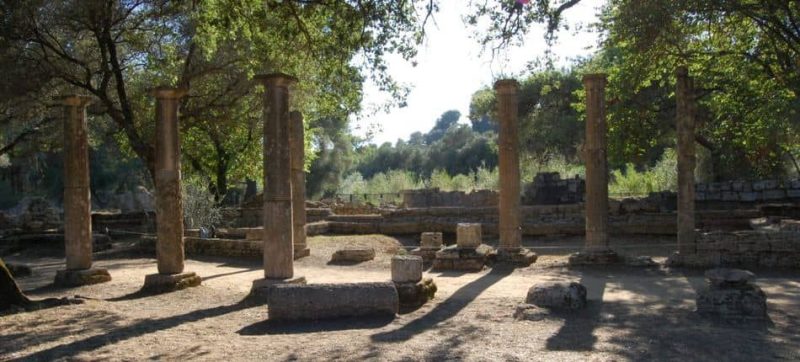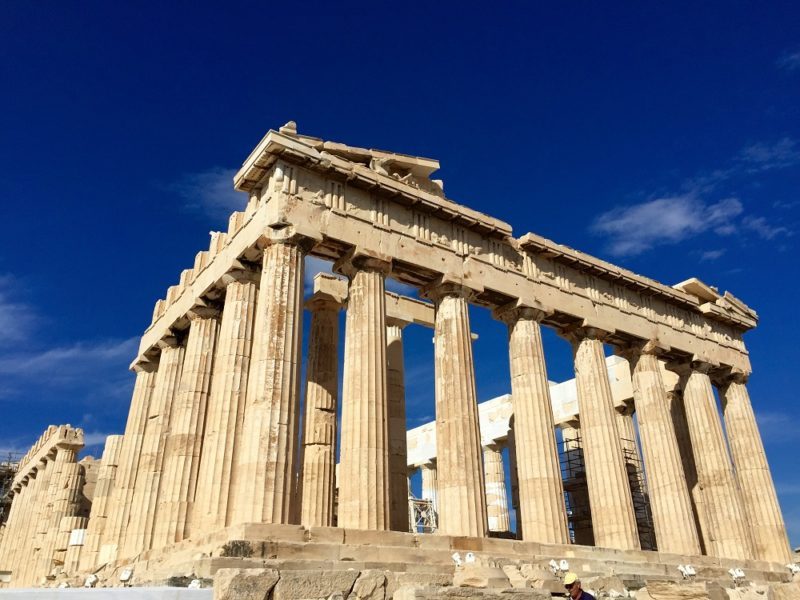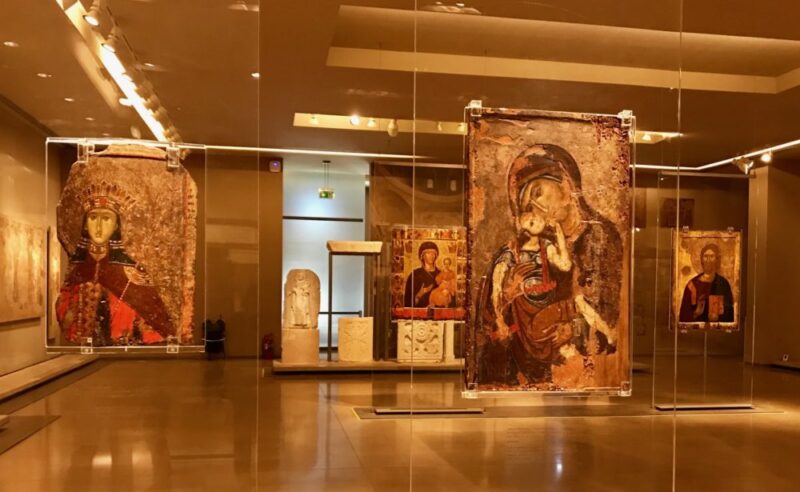The Benaki Museum is located on Vassilis Sofias Avenue, in a beautiful mansion belonging to the family of the same name. It has housed the works of this private foundation since 1930.
At the foot of the Kolonaki it is a simple and pictorial tour of the history of ancient Greece until the beginning of the 20th century. It takes at least two hours to visit it. Afterwards, you can enjoy the stores, bars and restaurants of this chic neighborhood. Unless you prefer to have lunch on the roof terrace of the museum which offers a magnificent view of Athens.
Benaki Museum: Practical info
Where is the Benaki Museum located?
Address: Koumpari 1, Athens 106 74 – Google Maps. Access Metro Evangelismos (blue line 3) or Syntagma (lines 2 and 3). The Benaki Museum is a 10-minute walk from Syntagma Square.
Opening hours
- Monday: 10am-6pm
- Tuesday: Closed
- Wednesday: 10am-6pm
- Thursday: 10am-0am
- Friday: 10am-6pm
- Saturday: 10am-6pm
- Sunday: 10am-4pm
Admission is possible up to 1 hour before the museum closes.
The Benaki Museum is closed on January 1, January 6, Clean Monday, March 25, Easter Sunday and Monday, May 1, Holy Spirit Day, August 15, October 28, December 25 and 26.
Admission tickets for the Benaki Museum
- Full price: 12€ / Reduced price (for over-65s): 9€
- Temporary exhibition: €8 (full price); €6 (reduced price)
- Free admission for under-22s, disabled visitors and accompanying adults, as well as Thursdays from 6pm to midnight (except for organized tours) and May 18 (International Museum Day).
You can download a free audio guide in English using a QR code.
If you’re looking for information, take a look at the Benaki Museum website.
The Benaki Museum offers a reminder of the history of Greece
If, like me, the history of Greece can be summed up in a rather approximate knowledge of Antiquity and a very blurred vision of the rest of its history, then this museum will quickly fill your gaps.
I strongly advise you to have a guide in this museum to better understand the exciting and eventful history of Greece and its multiple invasions. Some agencies offer guided tours of the Benaki Museum.
Nevertheless, even without a guided tour, throughout the four floors, the sets, mannequins in dress and reconstructed interiors will help you to better project yourself into the eras.
You can now buy your entrance ticket at the normal rate put on sale by the Benaki Museum on the Get Your Guide website (Be careful to select the Benaki Museum of Greek Culture and not the Benaki Museum of Islamic Art):
Ground floor of the Benaki Museum: antiquity and icons
The ground floor begins with the ancient world. The collection is simple and the choice precise: Cycladic figurines, busts, as well as magnificent pieces from Syrian ancient sites (basalt door and mosaics).
We then move on to Byzantine icons, whose characters’ eyes would be placed in such a way that their gaze seems to follow you everywhere. This is indeed the sensation one has, when one enters the semi-darkness, almost disturbing, of these rooms. Yet it is this darkness that magnifies the icons, because it contrasts with the gilding that illuminates the faces. A little advice: do not miss the icon of Saint Anne with the Virgin (Cretan school of the 15th century).

1st floor: post-Byzantine period
On the first floor, the post-Byzantine and foreign (Ottoman and Venetian) periods are traced. This is where you will find the interiors and costumes, presented in a very lively way. The jewelry, precious fabrics, brocades, silks and ornaments reflect the influence of the different cultures that have impacted Greece. It is also the whole culture of wood craftsmanship that is illustrated here with the panels, cabinets and chests. They are found in particular in the reconstitution of rooms of life of various regions of Greece (Kozani, Siatista and Hydra).
2nd and 3rd floors: cultural and economic life and war of independence.
The second floor is dedicated to the cultural, economic and spiritual life on the eve of the war of independence. Here again, beautiful and refined objects made of precious metal, which were often used for Orthodox worship.
Finally, the last floor evokes the war of independence and some aspects of modern Greece. Most of the objects come from the family heritage. A superb collection of weapons belonging to the heroes of the war, but also navigational instruments and a few paintings are enough to plunge us into a more recent era that is still often evoked by the Greeks today.

And after the visit, coffee and store…
Don’t forget to pass by the Benaki museum café and especially by its terrace . Because it offers a clear view of Athens. And you can have a simple coffee or enjoy a simple lunch break (it costs around 10€).
On your way out, stop by the store. Here the selection is quite traditional overall, but you will find a nice collection of jewelry.
Sophie B.




